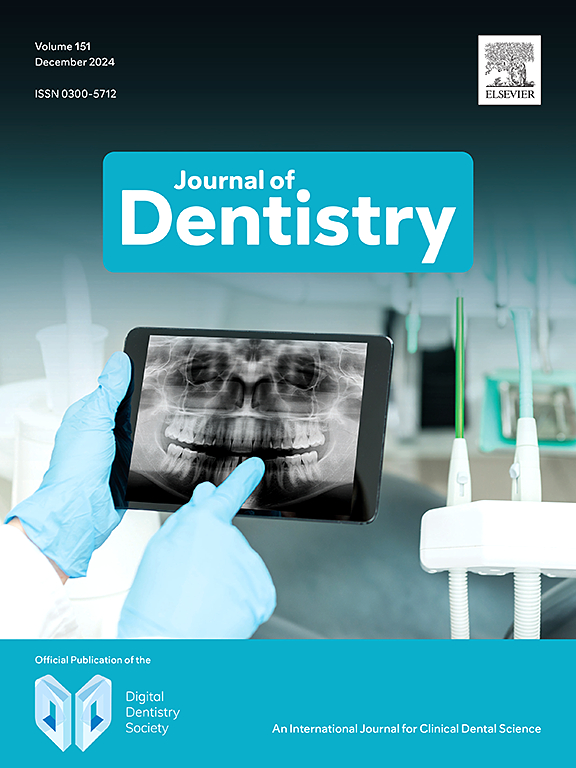Effect of surface treatments on the bond strength of resin-repaired resin matrix CAD-CAM ceramic: A scoping review
IF 4.8
2区 医学
Q1 DENTISTRY, ORAL SURGERY & MEDICINE
引用次数: 0
Abstract
Objective
To evaluate the existing evidence on surface treatment techniques employed in the repair of resin matrix CAD-CAM ceramics and their effects on short- and long-term bond strength.
Methodology
This scoping review was conducted following the PRISMA-ScR guidelines for scoping reviews and was registered on the Open Science Framework platform. Based on the PCC concept, where P: Resin matrix CAD-CAM ceramic blocks for CAD-CAM, C: Bond strength, and C: Surface treatments, a search was conducted in the PubMed, Embase, Web of Science, Scopus, and Lilacs (grey literature) databases until October 2024, with no language or date restrictions.
Results
In vitro studies comparing mechanical and/or chemical surface treatments on the bond strength of resin composite repairs were included. A total of 47 studies were included in the qualitative analysis, of which 45 used both mechanical and chemical treatments, and 29 used chemical treatments alone.
Conclusion
The combination of chemical and mechanical treatments is the appropriate option. Alumina blasting and silica coating are the most commonly used mechanical surface treatments, either alone or in conjunction with chemical treatments. Laser irradiation may serve as an alternative to conventional treatments.
Clinical significance
The studies revealed variability among protocols for repairing resin matrix CAD-CAM ceramics, with the combined use of chemical and mechanical treatments being the most effective approach.
求助全文
约1分钟内获得全文
求助全文
来源期刊

Journal of dentistry
医学-牙科与口腔外科
CiteScore
7.30
自引率
11.40%
发文量
349
审稿时长
35 days
期刊介绍:
The Journal of Dentistry has an open access mirror journal The Journal of Dentistry: X, sharing the same aims and scope, editorial team, submission system and rigorous peer review.
The Journal of Dentistry is the leading international dental journal within the field of Restorative Dentistry. Placing an emphasis on publishing novel and high-quality research papers, the Journal aims to influence the practice of dentistry at clinician, research, industry and policy-maker level on an international basis.
Topics covered include the management of dental disease, periodontology, endodontology, operative dentistry, fixed and removable prosthodontics, dental biomaterials science, long-term clinical trials including epidemiology and oral health, technology transfer of new scientific instrumentation or procedures, as well as clinically relevant oral biology and translational research.
The Journal of Dentistry will publish original scientific research papers including short communications. It is also interested in publishing review articles and leaders in themed areas which will be linked to new scientific research. Conference proceedings are also welcome and expressions of interest should be communicated to the Editor.
 求助内容:
求助内容: 应助结果提醒方式:
应助结果提醒方式:


